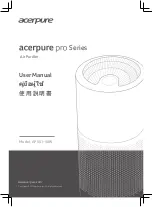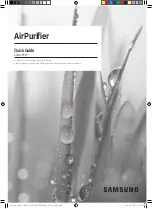
JOHNSON CONTROLS
74
FORM 100.50-NOM7 (808)
Service
MOD-DCU Analog Outputs
The MOD-DCU has six analog outputs that send a 0 to
10 volt DC signal to the respective actuator. Table 13
shows the analog outputs designated as AO1 through
AO6, and the respective function. Note the outputs are
speed reference signals to he supply fan VFD, exhaust
fan VFD or exhaust damper, damper actuators for
outside air/return air dampers, air measuring dampers,
and heating valve. The 0 to 10 volt DC output would
be linear over the respective actuator range of travel,
or over the VFD frequency range of 0 to 60 Hz. As an
example, if the output to the outside air damper actuator
was 5 volts DC, the outside air damper actuator would
be driven to one-half of its range of travel. Another
example would be a 4 volt DC voltage sent to the sup-
ply fan VFD as the speed reference signal. This would
“drive” the VFD to 24 hertz [(voltage reference signal
X 60) / 10 volts]. The actuator connections are:
Terminal 1 = 24VAC Common
Terminal 2 = 24VAC, and
Terminal 5 = 0 - 10VDC signal.
MOD-DCU Binary Outputs
The MOD-DCU has 10 binary outputs that switch 24
volt AC to relays to cycle compressors, supply fan, ex-
haust fan, etc
(refer to unit wiring diagram).
The outputs
are “dry contact” relays on-board the unit controller
(MOD-DCU) that will output 24 volts when energized
by the unit controller. The 24 volt AC output will then
energize the respective relays. Table 14 lists the output
designations.
Optional Thermostat Interface Board
(See Fig. 25)
There are no field connections required to the thermostat
interface board. Any thermostat that is field wired will
be connected at CTB1 in the control panel of the rooftop
unit and not to the thermostat interface board.
The thermostat interface provides the interface from
an ordinary two-stage heat, two-stage cool thermostat
to the MOD-DCU. The function of the thermostat
interface board is to covert the thermostat inputs,
which are basically binary inputs, to one analog output
that connects to the MOD-DCU at analog input AI 3
(J10-4). The DC voltage output for respective ther-
mostat inputs is shown in Table 13.
Binary “pass-through” Connections.
Four of the T'stat interface board inputs, G, OCC, SD,
X, and P are connected directly from the field installed
T’stat to the MOD-DCU binary inputs
(refer to Binary
Inputs).
These inputs are still routed through the T'stat
Interface board along with the other T'stat inputs, but
they only use the T’stat Interface Board as a connecting
point. Table 14 lists the connections and functions.
Analog
W2 W1 Y1 Y2
Output
0.0 Fault Fault Fault Fault
0.5
OFF
OFF
ON
ON
1.0 OFF OFF ON OFF
1.5 OFF OFF OFF ON
2.0 OFF OFF OFF OFF
3.0 ON OFF OFF OFF
4.0 OFF ON OFF OFF
5.0
ON
ON
OFF OFF
TABLE 13 –
THERMOSTAT INTERFACE BOARD
VOLTAGE OUTPUTS
Содержание J Series
Страница 85: ...FORM 100 50 NOM7 808 85 JOHNSON CONTROLS 6 ELECTRICAL NOTES AND LEGEND LD13862 ...
Страница 86: ...JOHNSON CONTROLS 86 FORM 100 50 NOM7 808 Service LD13863 CONNECTION DIAGRAM 25 40 TON CV VAV IGV ...
Страница 87: ...FORM 100 50 NOM7 808 87 JOHNSON CONTROLS 6 LD13864 ...
Страница 88: ...JOHNSON CONTROLS 88 FORM 100 50 NOM7 808 Service OPTI CONVERSION TO 25 40 TON LD13854 ...
Страница 89: ...FORM 100 50 NOM7 808 89 JOHNSON CONTROLS 6 LD13865 ELEMENTARY DIAGRAM ALL UNITS ...
Страница 90: ...JOHNSON CONTROLS 90 FORM 100 50 NOM7 808 Service LD13860 ELEMENTARY DIAGRAM GAS HEAT 25 40 TON 230V ...
Страница 91: ...FORM 100 50 NOM7 808 91 JOHNSON CONTROLS 6 ELEMENTARY DIAGRAM GAS HEAT 25 40 TON 575V LD13861 ...
















































